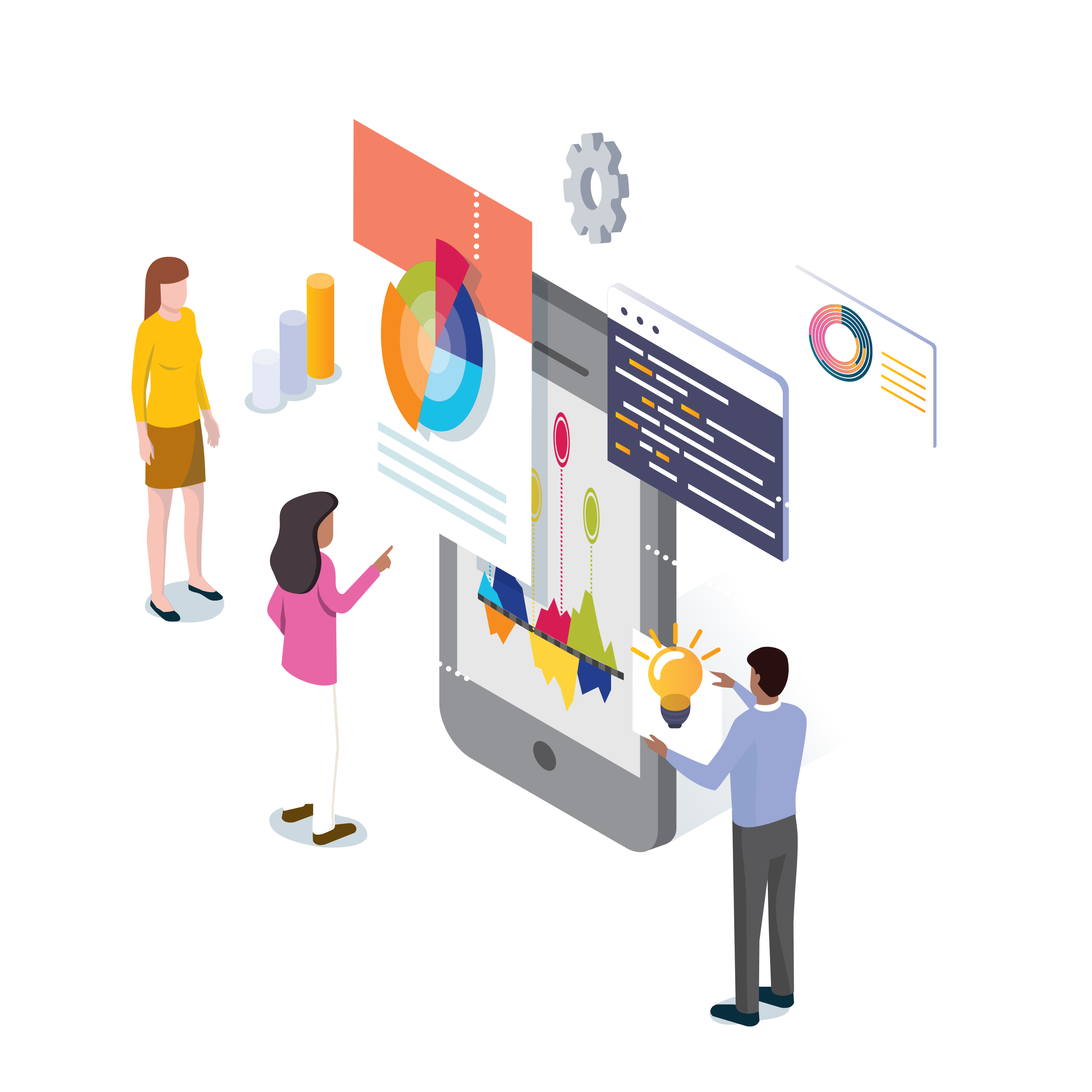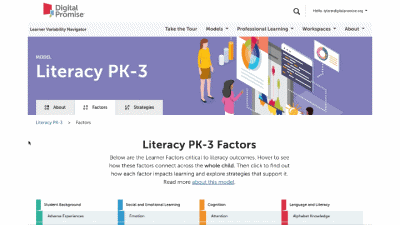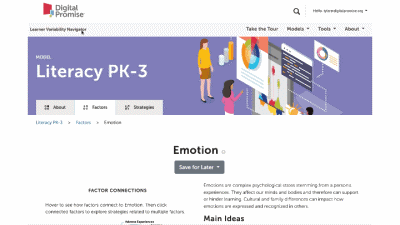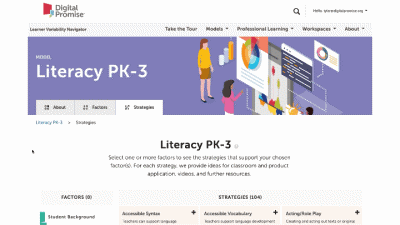Given the robust nature of learning sciences research, this website is best viewed on tablets and computers. A small screen experience is coming in the future.
On June 22, 2021, we will launch updated strategies for the Math PK-2 model, as well as additional updates to the Navigator that highlight equity, SEL, and culturally responsive teaching. To learn more, visit our Site Updates (available in the "About" menu at the top of any page).

Hover to see how factors connect to Primary Language. Then click connected factors to explore strategies related to multiple factors.
A student's Primary Language is the language or dialect they have been exposed to from birth which often does not match the language of instruction, creating multilingual classrooms. Being bilingual or multilingual can have cognitive and cultural advantages, opening up forms of Communication and an ability to understand different perspectives and cultures. Although students learning multiple languages may appear to have reduced vocabulary or may have trouble communicating in a particular language, it is important to value knowledge learners hold across their multiple languages. Bilingual/multilinguals will sometimes even code-mix, meaning they switch languages in the middle of or between sentences, which may support their ability to use vocabulary across both languages. Bilingual/multilingual learners who may be newer to attendance of the U.S. education system are paradoxically both less likely to be identified as in need of special education services where they may need them and over-identified as needing special education services when they do not. It is important for educators to distinguish between difficulties that stem from learning disabilities and differences that stem from their language skills, or a combination of both, in order to provide the most appropriate support.
Creating visual representations such as drawings, diagrams, graphs, and concept maps, whether student or teacher-generated, can help students process abstract concepts, enhancing understanding and retention of information.
Project-based learning (PBL) actively engages learners in authentic tasks designed to create products or design solutions that answer a given question or solve a problem.
Encouraging children to draw and to explain their drawings in the classroom, can support the development of Core Academic Literacies, especially when solving complex problems across content areas.
Students explaining their thinking during learning is a metacognitive process that involves actively self-questioning or being questioned while exploring new concepts, and explaining thoughts and reasoning in response.
Visiting places connected to classroom learning provides opportunities to add relevance to classroom topics and deepen understanding through firsthand experiences.
Games support learning, as learners engage with new information in fun and informal ways.
Gallery walks are ways of showcasing content and materials as multiple “exhibitions” for students to view and interact with as part of larger learning goals.
Flexible grouping is a classroom practice that temporarily places students together in given groups to work together, with the purpose of achieving a given learning goal or activity.
As learners work together to solve problems, they learn new strategies and practice Communication skills as they express their academic thinking.
Think-Pair-Share (TPS), also known as Turn & Talk (T&T), is when the teacher pauses instruction so students can discuss a topic or prompt in pairs or small groups, to enhance engagement and learning outcomes.
A mnemonic device is a creative way to support memory for new information using connections to current knowledge, for example by creating visuals, acronyms, or rhymes.
Read-alouds are an instructional practice in which teachers read aloud from a text to students, modeling fluent reading, asking questions, and actively engaging with students to enhance their understanding.
In guided inquiry, teachers scaffold student learning and help students use their own language to construct knowledge by active listening and questioning.
Supported independent reading, sometimes called Scaffolded Silent Reading, is when teachers scaffold and monitor learners' independent reading time, offering students a choice of accessible texts, and periodic check-in's with individual students to provide guidance and accountability.
Multimodal teaching and learning provide opportunities for students to engage with the same content through different sensory modalities, such as visual, auditory, and tactile.
A strengths-based approach is one where educators intentionally identify, communicate, and harness students' assets, across many aspects of the whole child, in order to empower them to flourish.
Audiobooks, digital text-to-speech books, and e-books are digital formats of literature that allow for portable and accessible reading experiences through audible narration and/or a written electronic version of a text.
Communication boards are displays of graphics (e.g., pictures, symbols, illustrations) and/or words where learners can gesture or point to the displays to extend their expressive language potential.
Using motions to explain new concepts or ideas supports the ability to process new information and to convey thinking and conceptual understanding.
Music and dance support learners in a myriad of ways, including supporting their engagement and motivation, connecting with cultural backgrounds, and offering structure during play.
Providing instructional steps clearly and concisely can help learners understand classroom expectations, reduce cognitive load, and complete tasks more efficiently.
Providing students a voice in their learning is critical for making learning meaningful.
Culturally responsive texts include those that reflect different facets of students' identities, including race, ethnicity, gender, socioeconomic, and disability status, as well as the intersections of those identities.
Discussing race with students can range from conversations on cultural celebration (e.g., celebrating the importance of diversity) to developing critical consciousness (e.g., understanding the impact of social inequities like racism and how to dismantle it).
Learning about students' cultures and connecting them to instructional practices helps foster a Sense of Belonging, increase positive student Identity development, and mitigate Stereotype Threat.
Family engagement happens when educators and schools collaborate with families to collectively support their child's learning in meaningful ways, both at school and at home.
Translanguaging is a flexible classroom practice enabling students to listen, speak, read, and write across their multiple languages or dialects, even if the teacher does not have formal knowledge of these additional languages.
A first step to supporting learners is truly understanding who they are.
Developing empathy in educators and in learners is an iterative process that requires taking the time to understand and honor others' perspectives.
Flipped learning is when the delivery of traditional content (i.e., lectures, and videos) occurs outside of the classroom, allowing class time to be used for more active and application-based activities.
Simulations involve students engaging in interactive experiences that mimic real-world scenarios to explore content, practice skills, and solve problems.
Youth participatory action research (YPAR) is a student-centered approach that puts the learner at the helm of the research process, from ideation to dissemination, to investigate and advocate for change they want to see in their schools and communities.
Collaborative writing activities allow peers to work together to plan, draft, edit, and revise during the composition process, supporting writing skills and engagement with content knowledge as students write to reflect upon and apply what they have learned.
Spaced practice is a learning strategy that deliberately spaces out learning or study sessions over varying periods of time, with the purpose of increasing retention, understanding, and long-term knowledge acquisition.
Retrieval practice requires students to access information, or get information “out” from Long-term memory in order to support better retention and understanding.
Graphic organizers—including advance organizers—are powerful instructional tools that help students visualize how ideas fit together, supporting the construction of meaning and strengthening recall across content area.
Pre-assessments are tools or activities used before instruction begins to help educators understand what students already know, understand, or can do—and where they may need support.
When classrooms are intentionally designed to promote inclusion, belonging, and accessibility, they positively influence key learner factors, including Attention, Self-Regulation, Learner Mindset, and Sense of Belonging.
 Except where otherwise noted, content on this site is licensed under a Creative Commons Attribution-NonCommercial 4.0 International License
Except where otherwise noted, content on this site is licensed under a Creative Commons Attribution-NonCommercial 4.0 International License





This is our homepage. You can access many of the features of the Navigator here, and learn more about how learner variability intersects with topics in education and learning. To start, select a content area – we call them Learner Models – to visit a factor map.
Factor maps show research-based concepts, "factors," that likely impact learning. They are organized into four categories: Learner Background, Social and Emotional Learning, Cognition, and Content Area. The map is interactive. Move your cursor over a factor to see connected factors. Select any factor to visit its summary page. We'll look at factor summary pages next.
This is a factor summary page. It provides a brief definition and review of the factor, a factor connections diagram, additional resources, and strategies that support this factor. On the strategy card, the multi-colored boxes show all the factors that it supports. Select a strategy to visit its summary page.
Strategy summary pages have an overview, information about using the strategy in different learning environments, resources of interest, the factors this strategy supports, and related strategies you can explore. To view all the strategies in a content area, use the strategies tab at the top of the page. We'll look at all the Strategies for this learner model next.
The strategy page shows ALL of the strategies for that learner model. You can select factors of interest for you or your learners, and it will narrow the strategies to only those that match all of the factors selected. This makes it easy to find key strategies to better design for learner variability. Again, select the strategy name to visit its summary page.
Are you sure you want to delete this Workspace?
Enter the email address of the person you want to share with. This person will be granted access to this workspace and will be able to view and edit it.
Adjust the permissions of your Workspace.
This Workspace is .
This Workspace's Reflection Area is .
Learner variability is the recognition that each learner is a unique constellation of strengths and challenges that are interconnected across the whole child. Understanding these connections and how they vary according to context is essential for meeting the needs of each learner.
It disrupts the notion of a one-size-fits all education. Understanding learner variability helps educators embrace both students’ struggles and strengths as we connect practice to uplifting the whole learner.
Throughout the site, we talk about "factors" and "strategies." Factors are concepts research suggests have an impact on how people learn. Strategies are the approaches to teaching and learning that can be used to support people in how they learn best.
Use the Learner Centered Design Tool to build a workspace. Go to Learner Centered Design Tool.
Or, create a new blank workspace for your product or project.
Use one of the guided tools to build a workspace.
Or, create a new blank workspace for your product or project.
Make a copy of this workspace.
Redirecting soon...
Generating summary page
Loading...
On this page, using your heatmap, you will be asked to select factors to further explore, and then select new strategies you might incorporate into upcoming instruction. Once done, click “Show Summary" to view your Design Summary Report.
On this page, using your heatmap, you will be asked to select factors to further explore, and then select new strategies you might incorporate into upcoming instruction. Once done, click “Show Report” to view your Design Summary Report.
By selecting "Show Report" you will be taken to the Assessment Summary Page. Once created, you will not be able to edit your report. If you select cancel below, you can continue to edit your factor and strategy selections.
Announcement here
Item successfully added to workspace!
Issue adding item to workspace. Please refresh the page and try again.
Learner variability is the recognition that each learner is a unique constellation of strengths and challenges that are interconnected across the whole child. Understanding these connections and how they vary according to context is essential for meeting the needs of each learner. It embraces both students’ struggles and strengths. It considers the whole child.
Throughout the site, we talk about "factors" and "strategies." Factors are concepts research suggests have an impact on how people learn. Strategies are the approaches to teaching and learning that can be used to support people in how they learn best.
The Learner Variability Navigator is a free, online tool that translates the science of learner variability into factor maps and strategies that highlight connections across the whole learner. This puts the science of learning at teachers' fingertips, empowering them to understand their own practice and support each learner.